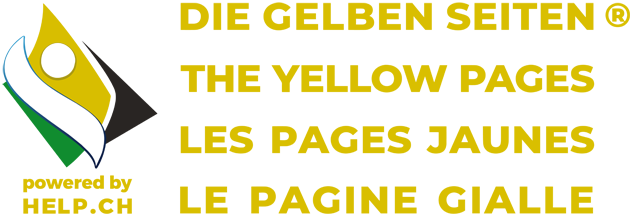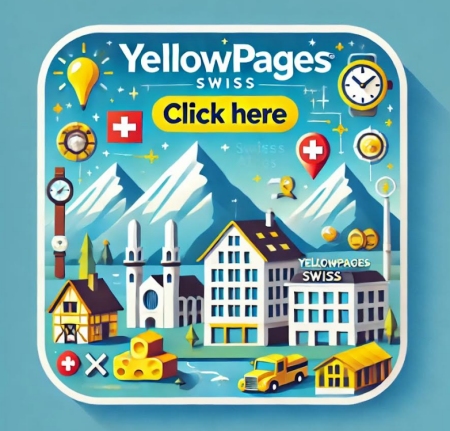Gemeinde Rottenschwil

Visit Website
Map & Directions
Review
Company description and purpose of company Gemeinde Rottenschwil
Rottenschwil is a street village. This means that the dwellings are mainly grouped along the cantonal road, which was expanded in a moderate and practical manner around 1980 after more than 20 years of planning and which runs through the village over a length of more than 2 kilometers. New settlements spread across the attractive residential areas. The settlement was first mentioned in history in 1281 under the name “Rodolfswile”. In 1306, in a Habsburg register, she was found under the name "Rotoswile". The old writings repeatedly mention three larger courtyards: the Källerhof in the upper part of the village, the Stägerhof in the plain and the Fahrhof on the Reuss. The latter had (even then) to play an important role. It was close to the Reuss. Its residents operated a ferry and the “Zum Hechten” tavern. Economically, the settlement was never of great importance. From the 15th century until the French Revolution, duties and taxes had to be paid to the monasteries of Muri and Hermetschwil. The settlers were happy when they could get from their barren soil what they urgently needed to live. Again and again they were deprived of the fruits of their labor due to the floods of the Reuss and often were themselves in great danger. Old maps show that the Reuss had many meanders in the Middle Ages and that its bed kept changing. Under these conditions, the village suffered from constant depopulation. In any case, when the canton was founded in 1803, there were still 257 souls without the hamlet of Werd, which then had more than 100 inhabitants. This formed its own municipality until 1898 before it was defeated by government council decree to Rottenschwil. Finally, in 1860, the valley residents were heard by the cantonal government. The Reuss was put in a corrected and deepened bed. The 300-year-old Mühledamm - built in 1580 by the abbess of the Hermetschwil monastery - was removed and a parallel canal was created on the left bank of the Reus from Mühlau to Hermetschwil. The many old courses of the Reuss were greatly reduced and valuable cultivated land could be gained. A powerful development began, so that in 1870 521 residents of Rottenschwiler (excluding Werder) populated the spell. The dawn of the industrial age passed the small Reuss valley community almost without a trace, until the 1950s the focus was solely on consolidating and improving the structures in the agricultural sector. At the same time, however, the population fell to a new low: there were 274 inhabitants in Rottenschwil-Werd in 1950. Around 35 still active farmers and all other landowners decided on April 21, 1967 to found a soil improvement cooperative. The work was integrated into the great Reuss valley meloration, which the Aargau people accepted by a narrow margin on December 14, 1969. As early as 1972, just one year after the first building law in Aargau came into force, Rottenschwil already had a legally binding zoning plan. With clever development stages and the timely solution of the necessary infrastructure tasks, the development that was pushing for a storm was kept within defined limits. Today the situation looks like that in the year 2000 a further comprehensive land use plan could be completed, through which further building area was developed. For the community of Rottenschwil, which already has over 800 inhabitants, this means that we can look forward to more newcomers in the years to come. One is prepared in any case, so in 2001 the primary school was expanded accordingly. The coat of arms How Rottenschwil came to today's coat of arms with the pike, the three-part wave bar and the six-pointed star is not recorded historically. However, it can be assumed that the tavern "zum Hechten", which was first mentioned in 1306 in a Habsburg register, could be the origin. But first some background before we come to today's coat of arms: When the canton of Aargau was founded in 1803, the municipalities were allowed to use their own seal or coat of arms. Before that, a rural community did not have its own right to seal; this was reserved for the cities. In 1811, Rottenschwil submitted its own seal to the then government council. This consisted of a yellow six-pointed star, a fish and the three-part wave bar. At that time, however, the fish was not yet recognizable as a pike, which is proven by historical records of the seal. In a second call in 1872 by the government council to the municipalities to submit their seal, Rottenschwil again sent the seal that had been chosen in 1811 to Aarau. In 1872, the Department of the Interior wrote to the municipalities of the canton of Aargau to find out how the seals that have been created since 1803 can be historically justified. No reason was submitted by Rottenschwil; The origin of the coat of arms in Rottenschwil was probably no longer known. We assume that the three wavy lines were chosen because Rottenschwil is located on the water, ie on the Reuss. It is very likely that the pike has its origin in the tavern called "zum Hechten" which was first mentioned in the Middle Ages. The six-pointed star can be traced back to the six-pointed star on the blue background of the canton's coat of arms, which stands for "Free Offices". Although the canton seal of the canton of Aargau is in certain parts similar to the Rottenschwiler seal (three six-pointed stars and wavy bars), it can be assumed that Rottenschwil was only inspired by the star when designing the seal. At that time, guidelines or suggestions that came from the “authorities from Aarau” were received with great skepticism. The fish in the coat of arms of Rottenschwil developed very late, not until the 20th century, recognizable as pike. Before it was a scaled fish. In 2002 Rottenschwil was informed by the State Archives that according to heraldry principles, the scales in the pike should be left out. Rottenschwil has agreed to this change in the municipal coat of arms, which led to the new coat of arms.
Translated by google.comThe company Gemeinde Rottenschwil on Hauptstrasse 21 in 8919 Rottenschwil with the phone number 056 649 93 49 is listed on Yellowpages.swiss. Latitude and longitude coordinates for Gemeinde Rottenschwil are: 47.314223 and 8.3626789. The unique identification number of this portrait is YPW-208824.
The company Gemeinde Rottenschwil is listed in the branch Administration. The company Gemeinde Rottenschwil offers its services in the following categories: Townships, other products or services according to the company's purpose.
Data Source: HELP.CH ®
Which companies are available at the same street? In addition to Gemeinde Rottenschwil, there are other active companies at the same street Hauptstrasse, 8919 Rottenschwil. This includes the companies ÄSTHETISCH SCHÖN, Caroline Huwyler ästhetische Kosmetikerin| Singenberger Klebe-Technik AG| F. Stranzalis Zurbuchen.
Info about Rottenschwil
The enterprise Gemeinde Rottenschwil is registered in the city of Rottenschwil. Rottenschwil is a municipality in the canton of Aargau. Aargau is a canton in the north of German-speaking Switzerland and is part of the Zurich metropolitan region. The capital and also the most populous place is Aarau. The canton of Aargau is one of 26 cantons in the Swiss Confederation.
The locality Rottenschwil is located in the canton of Aargau in Switzerland country, in Europe continent. Latitude and longitude coordinates for Rottenschwil are: 47.3137172 and 8.3620383. The local date and time in Rottenschwil is 07/11/2025, 4:39 AM.
Info about Canton Aargau
Aargau is a canton in the north of German-speaking Switzerland and is part of the Zurich metropolitan region. The capital and also the most populous place is Aarau. Latitude and longitude coordinates for Aargau center point are: 47.409703 and 8.154694.The information on this entry in the industry register of the entity Gemeinde Rottenschwil is provided without guarantee and has no legal effect.









